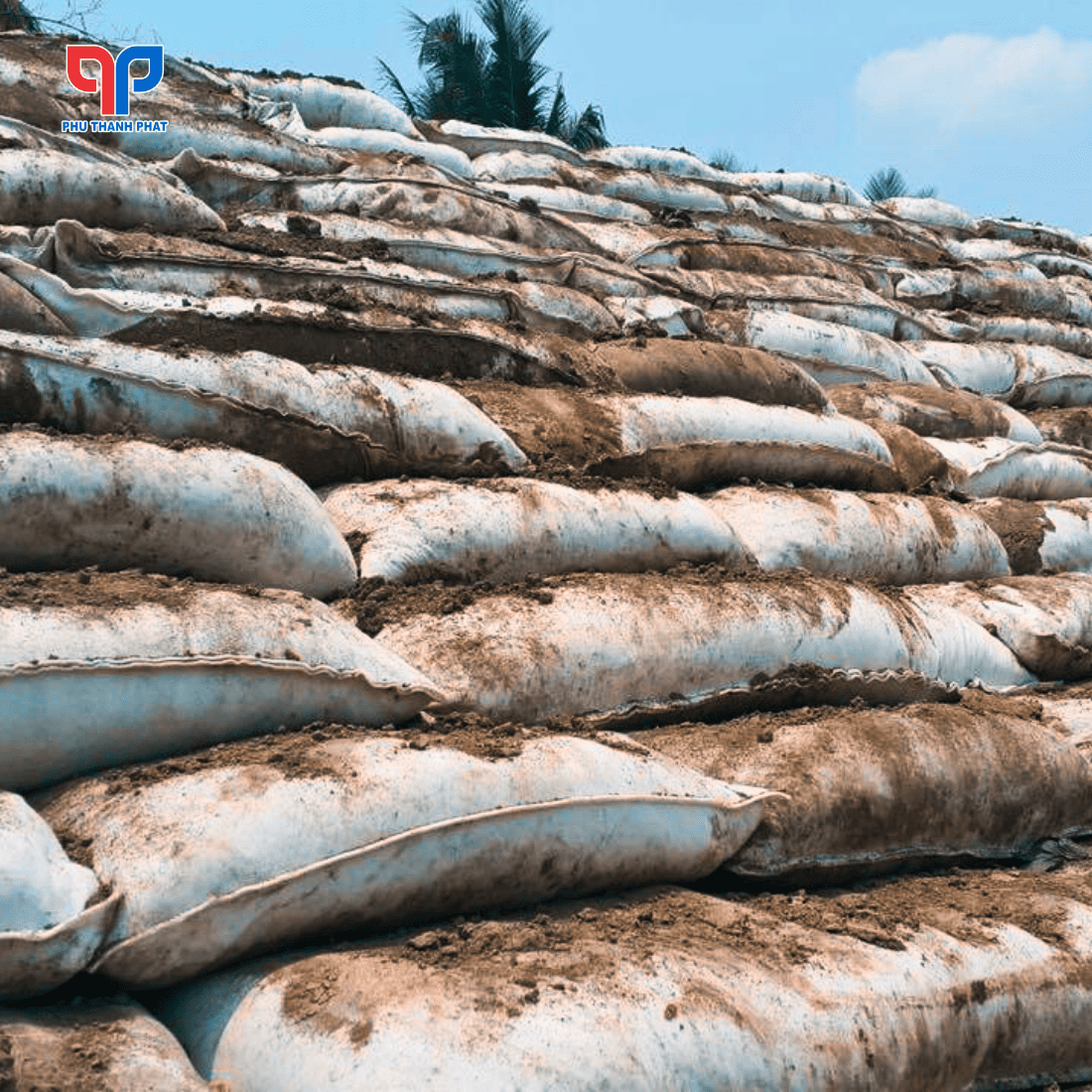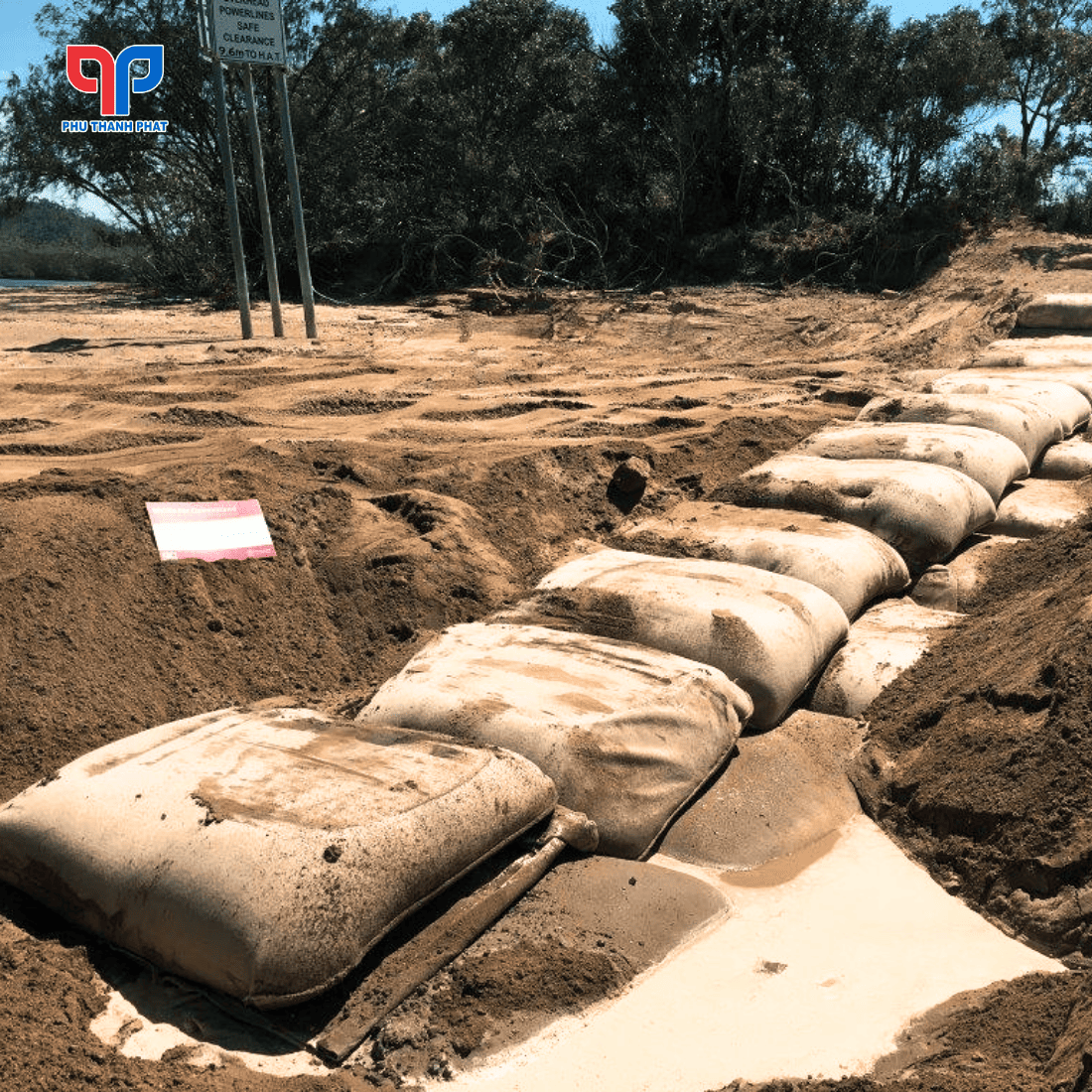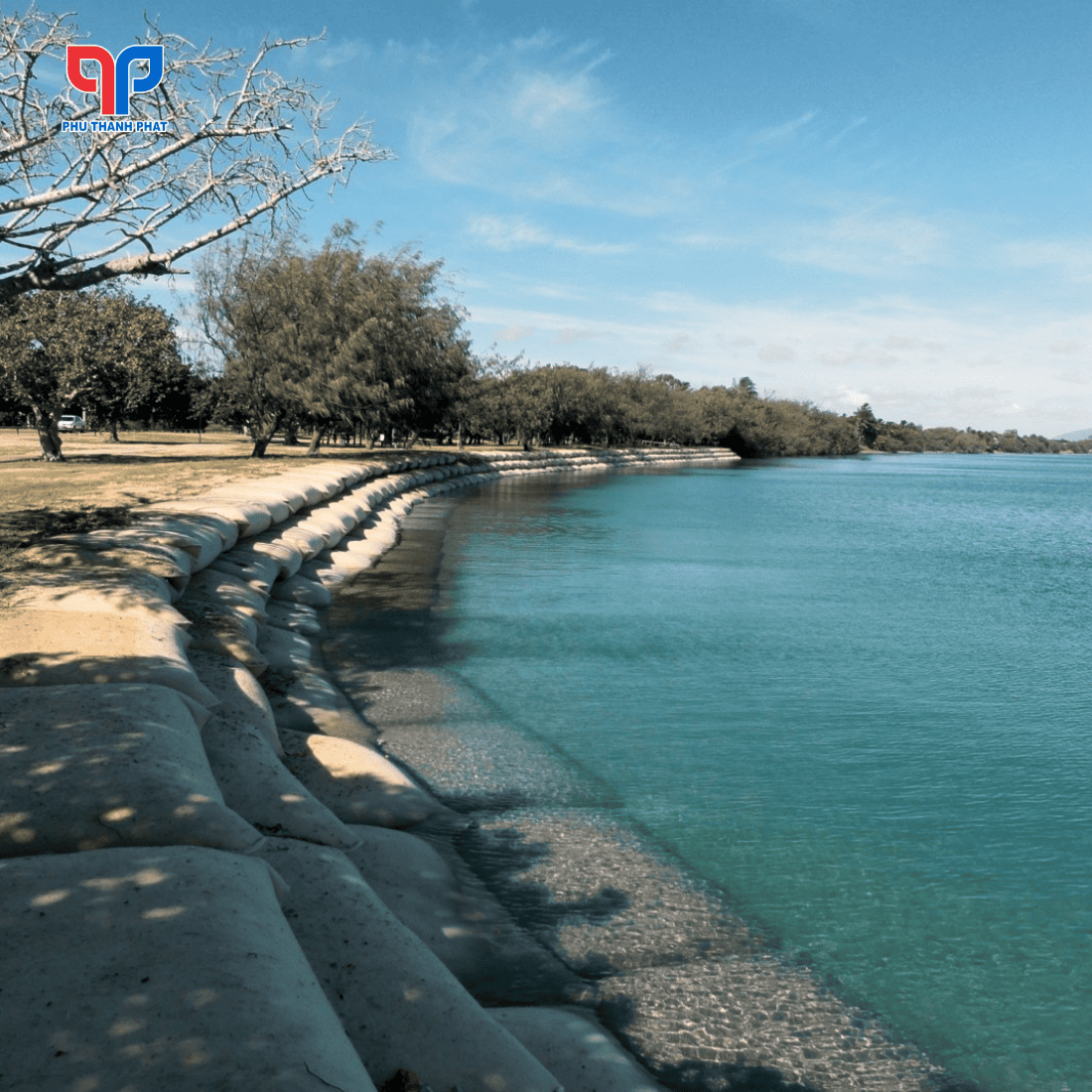Geotextiles are incredibly versatile materials. Beyond their traditional use as reinforcement fabrics, they can be fabricated into geotubes, geotextile planting bags, and, importantly, geotextile bags for waterway projects. This article by Phu Thanh Phat explores the structure and crucial role of geotextile bags in hydraulic engineering.
What are Geotextile Bags?
Geotextile bags, also known as geobags, are robust containers made from high mechanical strength woven or non-woven geotextiles. They are designed to withstand UV radiation and harsh environmental conditions. These bags, constructed with single or double layers depending on project requirements, have a hollow interior with capacities ranging from 0.5m³ to 8m³. During installation, they are filled with sand or mud to protect waterways, fill scour holes, reinforce embankments, and prevent erosion. Geotextile bags also create favorable environments for symbiotic microorganisms to thrive.

Advantages of Geotextile Bags
- High Sediment Accumulation: Effectively minimizes erosion and structural damage in waterway projects.
- Excellent Soil Adhesion: Promotes soil retention, erosion control, and creates a habitat for plant and microbial growth.
- Versatile Sizing and Aesthetics: Available in various sizes to meet design requirements and in multiple colors to enhance project aesthetics.
- Environmental Sustainability: Reduces carbon emissions and uses materials that are safe for human health and the environment.
- Durability and Cost-Effectiveness: High mechanical strength reduces maintenance costs and extends project lifespan.
- Economic Efficiency: Lower construction costs compared to concrete, steel, or rock gabions.
- Easy Transportation and Installation: Simple design reduces labor and transportation costs.
Practical Applications of Geotextile Bags
- Reinforcing riverbanks, coastlines, and slopes.
- Preventing soil erosion in coastal projects, especially in resorts and high-end developments.
- Emergency response for landslides, road damage, and coastal erosion.
- Temporary dam or levee construction.
- Stream and lake flow diversion.
- Bridge construction and foundation protection.
- Erosion control barriers and retaining walls.
Basic Geotextile Bag Installation Steps
- Select the Appropriate Bag: Choose the right type and size of geotextile bag for the project.
- Prepare the Site: Clear, compact, and level the installation area with proper anchoring systems.
- Fill the Bags: Fill the bags with the specified material to the required volume.
- Seal the Bags: Securely sew the bag openings to prevent material loss.
- Stack the Bags: Arrange the filled bags in layers to create the desired slope.
- Inspection and Approval: Conduct a thorough inspection to ensure proper installation.


Conclusion
Geotextile bags are essential geotechnical materials for waterway projects. Made from durable geotextiles, they provide reinforcement, separation, and filtration. Their effectiveness in erosion control, soil retention, and landslide prevention, combined with their cost-effectiveness and ease of installation, makes them an optimal solution for hydraulic engineering.
This article provides a basic overview of geotextile bags. For further information or assistance, please contact Phu Thanh Phat.
CONTACT INFORMATION
Head Office: 15 Street 5, Vinh Loc Residential Area, Binh Hung Hoa B Ward, Binh Tan District, Ho Chi Minh City
Hotline: 028.666.03482 – 0909.452.039 – 0903.877.809
Email: info@vaidiakythuat.com
